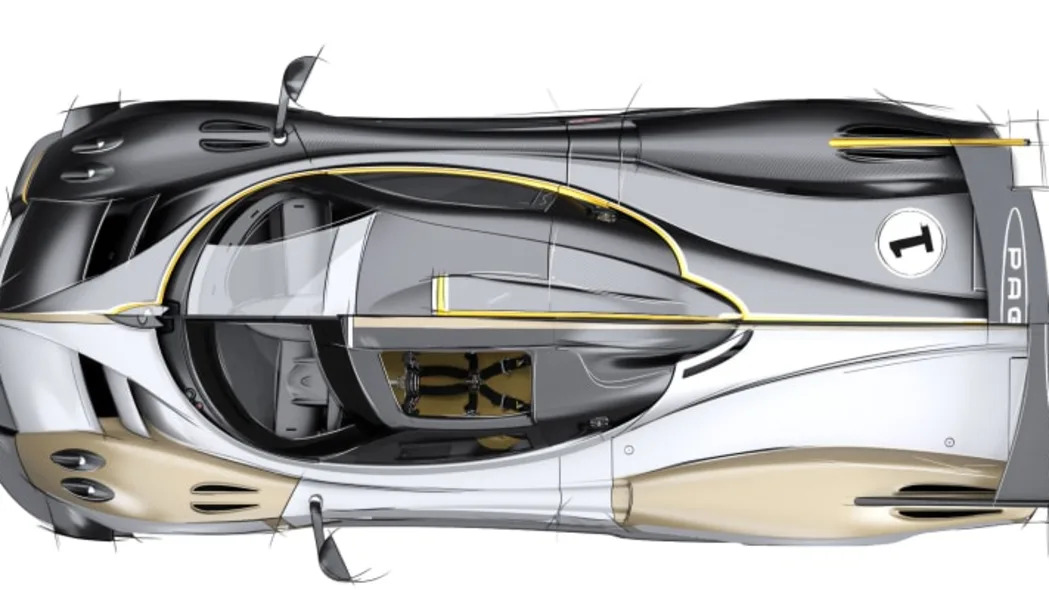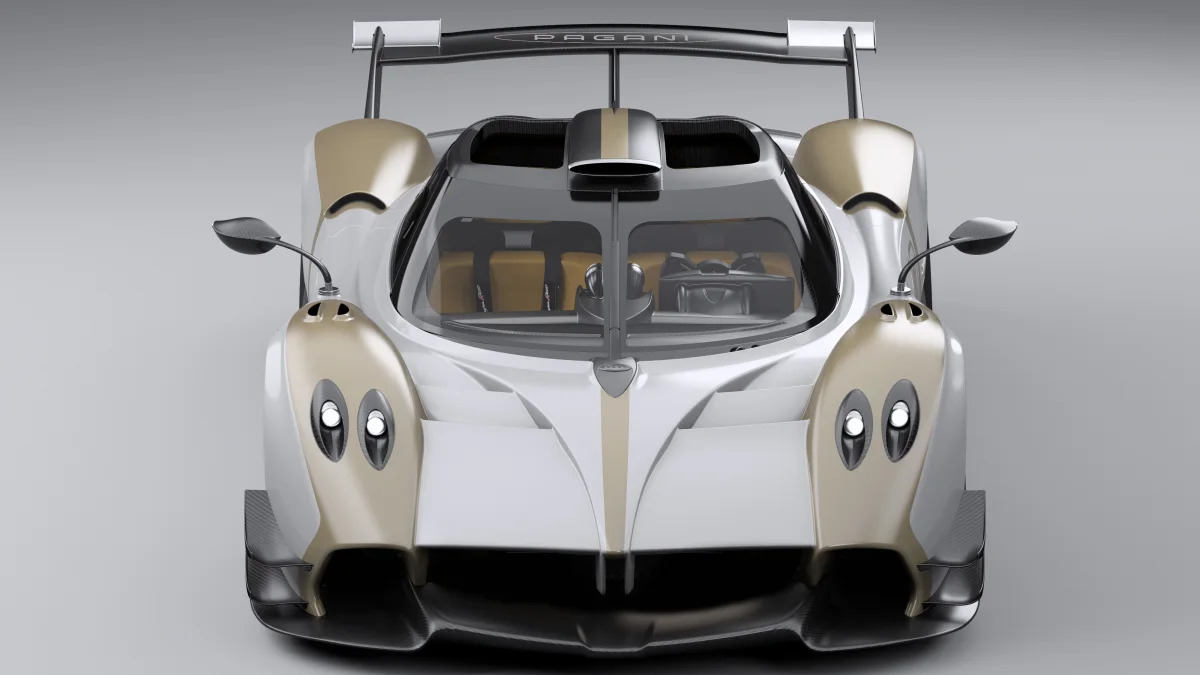Pagani is challenging the now-common assumption that a track car needs to be a coupe. It released a long-tail evolution of the Huayra R named Evo that has a 900-horsepower V12 engine, 45% more downforce than the car it's based on, and a pair of removable roof panels.
The brand explains that it drew inspiration from a number of sources, including IndyCar racers and historic Le Mans vehicles. Company founder Horacio Pagani adds that he told his team "let's start by removing the roof and take it from there." The end result is more than just a Huayra R with holes above the passengers: two years in the making, the Huayra R Evo features a redesigned body kit that includes a bigger front splitter, a central stabilizing fin, and a rear panel extended by about 7.5 inches. The differences between the R and the R Evo are illustrated by a sketch shown below. The rear diffuser and rear lights have been redesigned as well, and the body is made with carbon fiber.

Redesigning the Evo's aerodynamic profile increases downforce and efficiency by 45% and 21%, respectively, compared to the standard R without increasing air resistance. Put another way, at 199 mph the Evo generates a greater vertical aerodynamic load than its total weight. And, surprisingly, the open roof panel actually increases aerodynamic efficiency: it helps boost downforce by an additional 5% instead of increasing drag. If you'd rather not use a hypercar as your hair dryer, a pair of roof panels quickly turns the Huayra R Evo into a coupe.
We haven't seen the Evo's full interior yet. Pagani notes that there's a safety cage, six-point harnesses, and fireproof upholstery.
Power comes from an evolution (it's called Evo, after all) of the 6.0-liter V12 inaugurated by the Huayra R. In this application it develops 900 horsepower at 8,750 rpm and 568 pound-feet of torque from 5,800 to 8,200 rpm, and its redline is pegged at 9,200 rpm. Naturally-aspirated, the engine features a redesigned intake manifold, new camshafts, and an exhaust system tuned to deliver a sound described as distinctive. The cavalry reaches the rear wheels via a six-speed sequential transmission that's structurally integrated into the suspension system.
Pagani made big changes to the suspension, such as adding a heave damper described as "a third hydraulic element that separates the management of the car-body height from the independent dampers of the four wheels." It also fitted a new, Evo-specific carbon-ceramic braking system developed with Brembo and Pirelli P Zero tires that are wider than the Huayra R's. The overall package should be even more impressive on the track than on paper: Pagani claims the Evo can match the performance level of a Le Mans Prototype 2 race car.
There's no word on pricing yet, but this is one of those "if you need to ask..." deal. Production figures haven't been announced, either, but buyers will be eligible to participate in the Arte in Pista program which lets them drive their car on tracks around the world in non-competitive events. They're supported by Pagani's in-house assistance team, including the technical director, as well as engineers and mechanics.










Sign in to post
Please sign in to leave a comment.
Continue